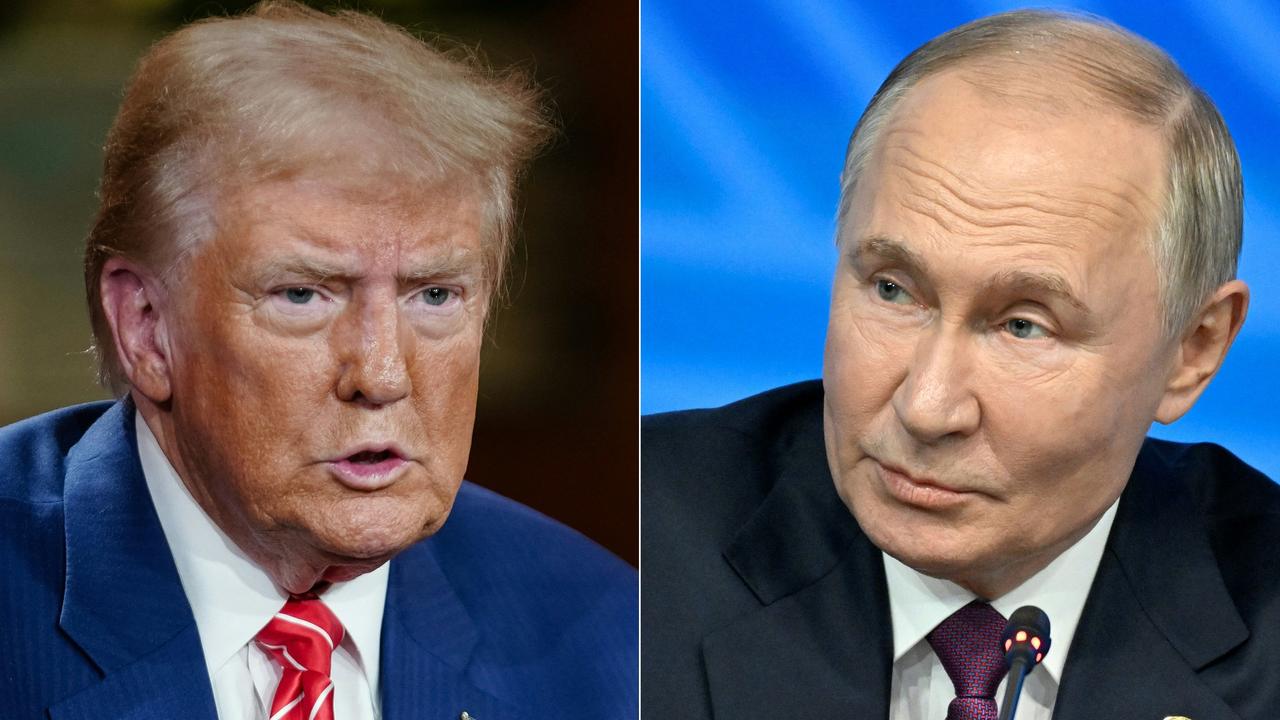‘Out of kilter’: Indian migrants fuel surge as Labor struggles to rein in numbers
A massive surge in migrants from India is hampering efforts to rein in overall numbers, fuelled by a controversial pact signed by Anthony Albanese after Covid.

Economy
Don't miss out on the headlines from Economy. Followed categories will be added to My News.
A massive surge in migrants from India that has continued since Covid is hampering the government’s efforts to rein in overall numbers, while universities have emerged unscathed from failed efforts to put caps on international students.
There were 300,000 Indians holding temporary visas in Australia in the September quarter — by far the biggest single group — up from 200,000 in the same period in 2019.
The September figure included 115,000 Indians on student visas and 80,000 Indians on graduate visas.
“The federal government attempted to slow Indian migration via Ministerial Direction 107, which was aimed at cutting the number of high-risk students entering Australia,” said MacroBusiness chief economist Leith van Onselen.
But following backlash from the university sector, Labor revoked MD107 in December and replaced it with MD111, which means the government will now process visas for all institutions on an equal basis, up to 80 per cent of the student cap previously allocated by the government under the failed legislation that was blocked by the Coalition and the Greens.
“Once an institution has met its 80 per cent allocation, the institution will be moved to the back of the queue, behind other universities that have not yet met their 80 per cent capped number,” Mr van Onselen said.
Universities Australia chief executive Luke Sheehy welcomed the “commonsense decision” at the time.
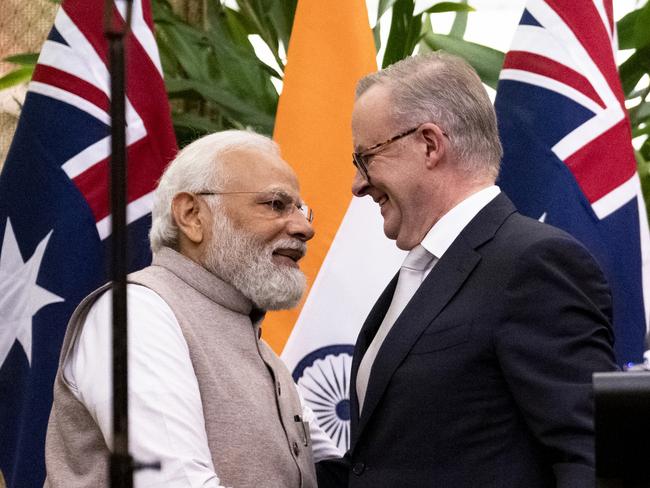
“MD107 has wreaked havoc, stripping billions of dollars from the economy and inflicting incredibly serious financial harm on universities, particularly those in regional and outer suburban areas,” he said in a statement.
“Internationalisation and international students are critically important to our economy, our society and our universities. They never deserved to be positioned as cannon fodder in a political battle over migration and housing.”
Fuelling the surge in Indian students is an agreement signed in May 2023 by Prime Ministers Anthony Albanese and Narendra Modi, the Australia-India Migration and Mobility Partnership Agreement, which opened the doors to more Indian students as well as graduates and early-career professionals.
The pact means Indians can apply for five-year student visas, with no limit on the number who can study in Australia, and graduates can apply to work in Australia for up to eight years without visa sponsorship.
The Albanese government also signed the Mechanism for Mutual Recognition of Qualifications, which covers a range of education qualifications including degrees and diplomas, meaning Australia will recognise Indian vocational and university graduates to be “holding the comparable” Australian Qualifications Framework (AQF) qualification for the purposes of admission to higher education and general employment.
“The problem with the migration and mobility agreements is that they are obscure,” Mr van Onselen said. “We don’t exactly know what these agreements mean in practice.”
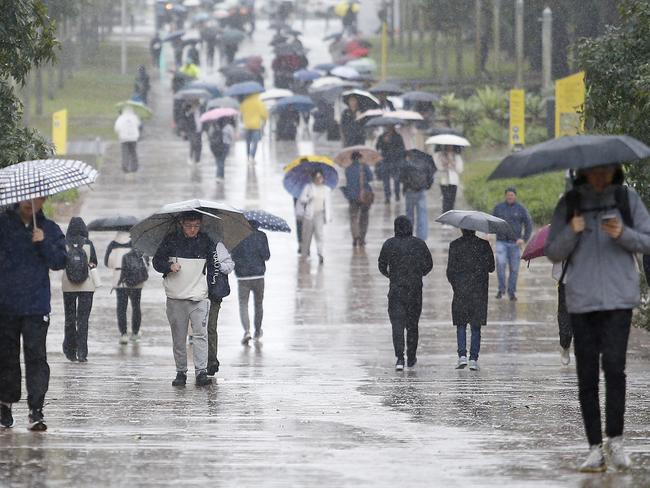
Opposition leader Peter Dutton previously welcomed the deal, saying in a speech to India’s Jindal Global University in 2023 that there was “strong bipartisan support between the two major political parties in Australia when it comes to nurturing migration with India”.
“[The] Migration and Mobility Partnership Agreement … will facilitate a greater two-way flow of students, of graduates, of academics and business people,” Mr Dutton said. “It’s an initiative I welcome wholeheartedly.”
Meanwhile universities are on track to enrol record numbers despite the policy chaos surrounding overseas students, The Australian Financial Review reported on Sunday.
Vicki Thomson, chief executive of the Group of Eight, representing the country’s leading research universities, told the newspaper semester one applications were holding up and would be similar to last year.
The total number of visas granted from July to November fell 10 per cent to 151,150, but the number of higher education visas granted for that period was a record 87,133, a result of the time lag between application and approval.
Dr Abul Rizvi, former deputy secretary of the Immigration Department, said while there had been a “massive boom in Indian and Nepalese students after Covid”, he expected those numbers to fall sharply going forward due to tightened visa restrictions.
“[The boom] was because of unlimited work rights,” he said.
“The moment you do that, you’re saying you’ve converted the student visa into a work visa. Then when the tightening hit [last year], it hit almost entirely Indian, Nepalese, Sri Lankan, Pakistani students. It didn’t affect Chinese students at all. Chinese student application rates continue to hit new records, whereas Indian student offshore applications are about 25 per cent of what they were compared to the [post-Covid] surge. It’s a huge fall and a massive increase in the refusal rate.”

Offshore student visa applications are assessed based on “evidence levels”, with the lowest-risk providers — generally the Group of Eight and other top universities — ranked as evidence level one.
“It you’re a provider at evidence level three a student application for you will require the highest levels of evidence to prove you’re a genuine student and your application will be scrutinised much more closely,” Dr Rizvi said.
“Because a lot of Indian students were being recruited by level two and level three providers, they experienced the biggest increase in refusal rates, whereas level one providers tend to focus on the China market and were thus less affected.”
Dr Rizvi said concerns that the migration and mobility pact with India was too generous and would hamstring the government’s efforts to rein in migration were incorrect and based on a “misinterpretation of how the visa system works”.
“Unless we have a dramatic shift by low-risk providers into the Indian market I don’t see an issue, because if high-risk providers continue to be the ones that focus on the Indian and Nepalese market they will continue to see high refusal rates,” he said.
“In the agreement there is nothing that talks about evidence levels, refusal rates, and they are always key to what happens.”
Latest figures from the Australian Bureau of Statistics (ABS) revealed the country brought in 446,000 net overseas migrants in the 2023-24 financial year, down from the record of 536,000 in 2022-23 but well above the Albanese government’s target of 395,000.
Of those, international students were the largest group on 207,000, while India was the top source of migrants.
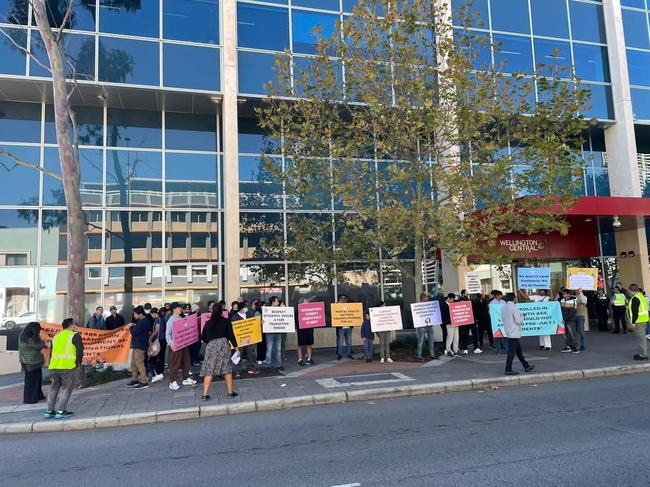
Labor’s mid-year budget update in December revealed overseas migration is expected to be 340,000 this financial year, well above the 260,000 previously forecast.
The government said the number of new arrivals since July had been in line with expectations, but there were fewer departures.
Speaking to the ABC, Treasurer Jim Chalmers was unable to explain why people were staying for longer.
“It’s coming down slower than was anticipated in the budget really for one reason, and that’s because there have been fewer departures,” Mr Chalmers said. “People are hanging around for longer … I don’t have a more granular sense like that.”
Dr Rizvi said the discrepancy was because “a large percentage” of student visa holders were seeking permanent residency.
“The reality is though that the number of places available relative to the number seeking a place is so out of kilter that the vast bulk will ultimately be caught in what I call immigration limbo,” he said.
“And they will start to hit a visa brick wall in the next couple of years. In Treasury’s forecasts for net migration, they are assuming a very large number of these people depart over the next two years and the bulk would have to be Indian.”
Dr Rizvi accepted that Treasury’s migration forecasts had consistently been wrong but “you’d like to think they’re getting better”.
“Yes the numbers have gotten out of kilter, and that was fundamentally a consequence of the Coalition stomping on the student visa accelerator and the Labor government being too slow to respond,” he said. “The fact is they both made a mistake and neither will own up to it.”
A spokesman for the Home Affairs Department said a number of policy and operational changes had been implemented after the Migration Review, Nixon Review and the Joint Standing Committee for Foreign Affairs, Defence and Trade “all pointed to risks in the student visa program and wider exploitation of the migration system”.
“The international education sector is important to Australia, and the Australian government is committed to ensuring its quality, integrity and sustainability,” he said.
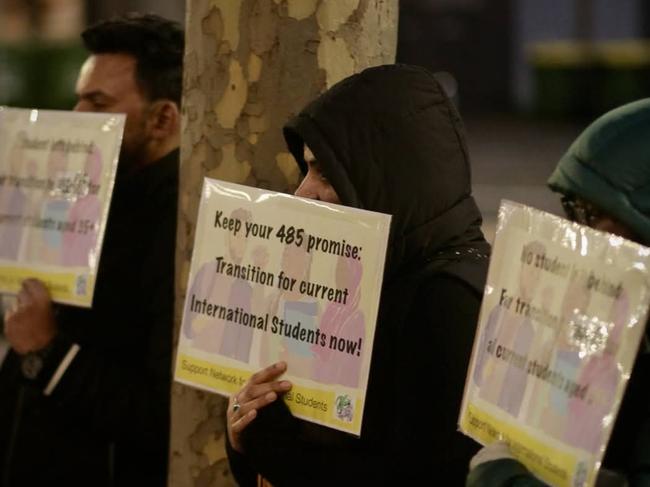
“A student visa cannot be granted until all legislative requirements for the grant of the visa under Australia’s migration legislation are met, which includes evidence of English language capability, financial capacity and that an individual intends to be a genuine student.”
He said student visa grant rates overall, including for Indian students, had declined since 2022-23 as a result of the changes.
“[The] overall student visa grant rate of 79.8 per cent in 2023-24 was the lowest since 2005-06 when the department commenced reporting these indicators,” he said.
“For India, a visa grant rate of 66.6 per cent for 2023-24, was second only to 2009-10 at 66.2 per cent. Ministerial Direction 111 will ensure more even access to offshore student visa processing through a new prioritisation approach.”
Jordan Knight, a former One Nation staffer who now runs one-man advocacy group Migration Watch, has described the Albanese government’s pacts with India as effectively an “open border” agreement.
“At the time when the government is supposed to be cutting immigration we’ve flung the door open to India,” he said. “They’ve completely hamstrung themselves.”
Mr van Onselen said he did not agree that the two migration pacts represented “open borders” agreements.
“However, they should boost migration from India, as suggested by Dutton,” he said.
“Otherwise, why sign them? By extension, these agreements would seem to limit the government’s options in reining in migration from India.”
Mr Knight, who has about 30,000 followers across TikTok and X, said Australia’s near-record high immigration was increasingly a concern for the public.
“People message us all the time saying, ‘Hey, my town, my street, my workplace is rapidly changing and I don’t know what’s going on.’ They’re finding nobody is really talking about it, the political class isn’t telling them anything,” he said.
Mr Knight said a “major sticking point for the average Australian is if we’re bringing so many people in, how can we expect them to assimilate and integrate”.
“We’re going to have this Balkanisation where people don’t really have anything in common and tensions ensue,” he said.
“It’s perfectly reasonable to have questions about that and the government just simply isn’t talking about it. Nobody is ever asked. Polls have found about 70 per cent of Australians want to cut immigration and yet that isn’t what’s happening.”
Driven by concerns over housing affordability and cost-of-living, Mr Knight argued young people in particular were now raising concerns about immigration.
“It’s a really interesting political phenomenon,” he said.
“For so long people expected young people to shift to the progressive left, whereas [the opposite] reaction has occurred in this environment of globalisation, immigration, free trade. I think young people just want their countries back and the living standards their parents enjoyed.”
Opposition immigration spokesman Dan Tehan has been contacted for comment.
Originally published as ‘Out of kilter’: Indian migrants fuel surge as Labor struggles to rein in numbers




